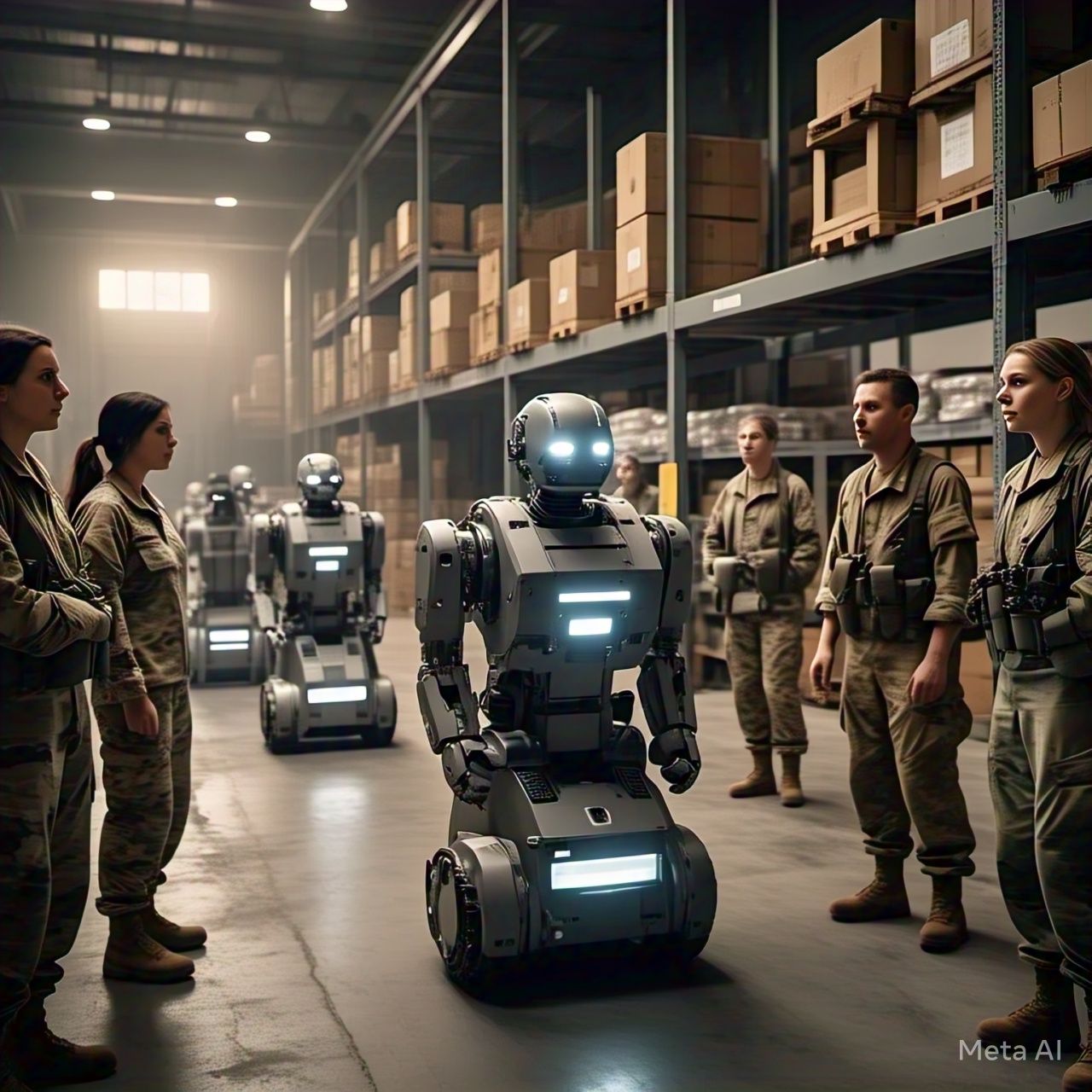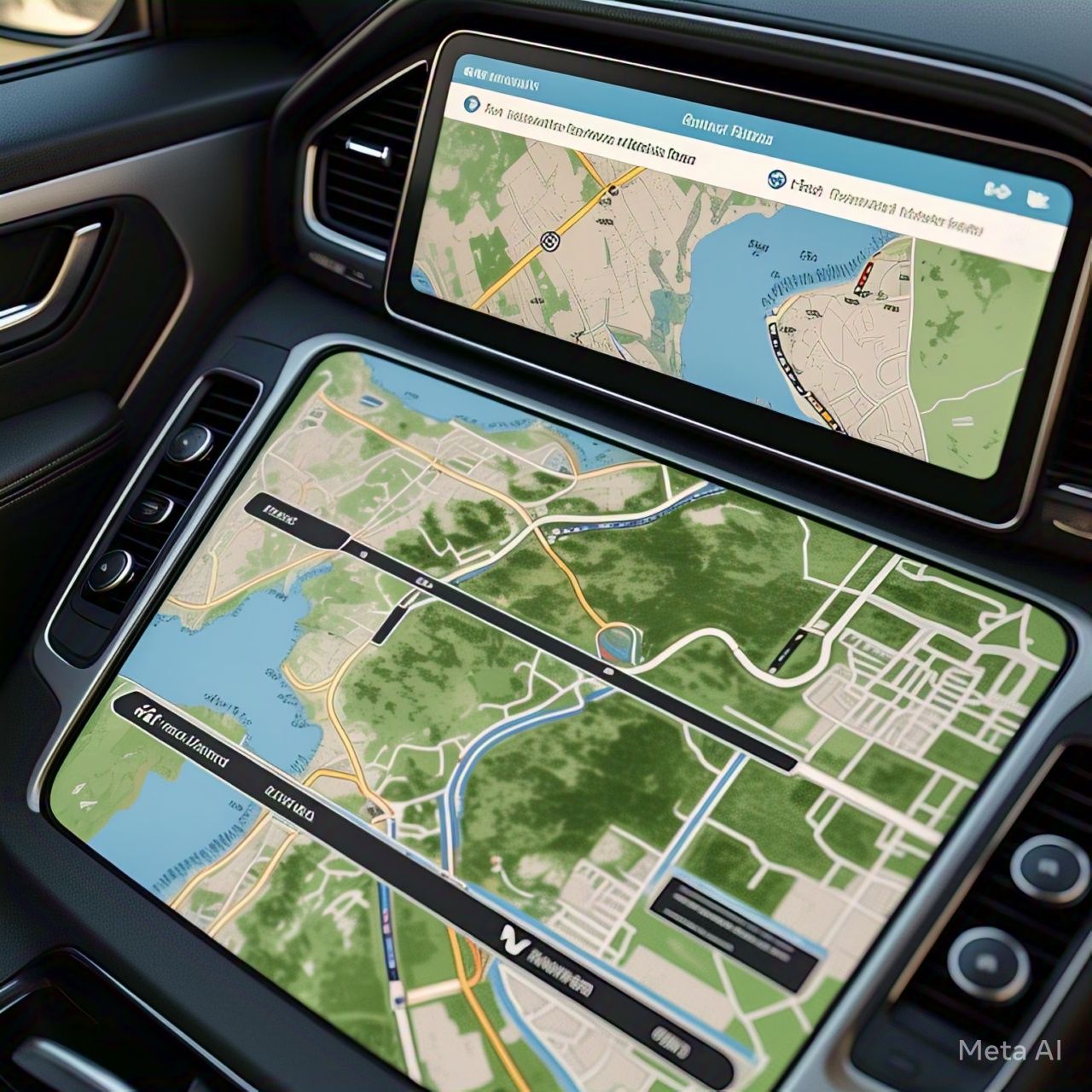Table of Contents
- Introduction
- The Role of AI in Military Logistics
- Robotics in Military Supply Chains
- Key Technologies Powering AI in Military Logistics
- Applications of AI in Military Logistics
- Autonomous Supply Chain Management
- Predictive Maintenance
- Drone-Based Supply Delivery
- Smart Warehousing
- Benefits of AI in Military Logistics
- Challenges and Limitations
- Future of AI and Robotics in Military Logistics
- Conclusion
- FAQs
Introduction
The role of artificial intelligence (AI) in military operations has been expanding rapidly, bringing unprecedented efficiency to battlefield logistics. AI and robotics are transforming supply chain management, making military operations faster, more precise, and less dependent on human intervention. From automated warehouses to AI-driven predictive maintenance, military logistics is undergoing a revolutionary transformation that enhances strategic capabilities and operational readiness.
In this article, we will explore the applications of AI and robotics in military logistics, their benefits, challenges, and the future of AI-driven supply chains in the defense sector.
The Role of AI in Military Logistics
Military logistics is a critical component of defense strategy, ensuring the timely and efficient delivery of supplies, equipment, and personnel. AI plays an integral role in optimizing logistics through:
- Automating inventory management: AI algorithms track supply levels in real-time, reducing waste and ensuring that critical supplies are always available.
- Enhancing predictive analytics: AI anticipates potential supply chain disruptions and suggests alternatives.
- Enabling autonomous transportation: AI-powered drones and autonomous vehicles transport supplies to high-risk areas without endangering human lives.
- Streamlining decision-making: AI assists commanders in making real-time logistical decisions, optimizing resource allocation, and improving battlefield readiness.
Applications of AI in Military Logistics
1. Autonomous Supply Chain Management
AI can optimize supply chains by forecasting demand, reducing waste, and improving distribution networks. AI-powered systems analyze various data points such as historical usage, terrain conditions, and weather to ensure timely supply deliveries.
2. Predictive Maintenance
Using AI, the military can predict equipment failures before they occur, reducing downtime and increasing efficiency.
- Machine learning models analyze equipment data to detect patterns of potential failures.
- Sensors monitor real-time data on temperature, pressure, and vibration to assess equipment health.
- Preventive maintenance scheduling ensures that vehicles, aircraft, and other assets are always in optimal condition.
3. Drone-Based Supply Delivery
AI-powered drones can be used to transport essential supplies such as food, ammunition, and medical aid to remote or dangerous locations.
- Tactical Resupply: Drones can deliver food, ammunition, and medical supplies to soldiers in combat zones.
- Emergency Response: Drones can reach disaster-hit areas to provide emergency medical aid.
- Surveillance and Reconnaissance: AI-equipped drones monitor enemy activity and provide real-time data to military commanders.
4. Smart Warehousing
AI-driven automation improves the efficiency of military warehouses.
- Automated Inventory Management: AI tracks and replenishes supplies automatically.
- Robotic Assistance: Autonomous robots sort, retrieve, and transport supplies within warehouses.
- Real-time Monitoring: AI-powered sensors track stock levels, reducing the risk of shortages.
Key Technologies Powering AI in Military Logistics
| Technology | Function |
|---|---|
| Machine Learning (ML) | Enables systems to analyze historical data and make accurate predictions about supply chain needs. |
| Internet of Things (IoT) | Smart sensors track inventory, vehicle status, and environmental conditions in real time. |
| Blockchain | Secures military supply chain data, ensuring transparency and preventing counterfeiting. |
| Autonomous Vehicles & Drones | Reduce human involvement in transportation and reconnaissance. |
| Big Data Analytics | Processes large amounts of logistical data to optimize efficiency. |
| Artificial Neural Networks | Improves decision-making capabilities by identifying patterns in logistics data. |
Challenges and Ethical Concerns
Despite the advantages, AI-powered drones and logistics systems face challenges:
- Cybersecurity Risks: AI-driven systems are vulnerable to cyberattacks that could compromise military operations.
- Operational Costs: The development and maintenance of AI-powered drones require significant financial investment.
- Lack of Human Oversight: Over-reliance on AI in military decisions can lead to errors and ethical concerns.
- Autonomy and Accountability: The use of autonomous drones in military operations raises questions about responsibility and legal implications.
- Technological Reliability: AI systems are prone to malfunctions, which can have serious consequences in warfare scenarios.
Future of AI-Powered Drones in Reconnaissance
As technology evolves, AI-powered drones will continue to play an increasingly critical role in military, law enforcement, and humanitarian missions. Some anticipated advancements include:
- Enhanced AI Algorithms: More sophisticated machine learning models for better threat detection.
- Improved Autonomy: Fully autonomous drones capable of executing complex missions with minimal human intervention.
- Advanced Swarm Tactics: Coordination among multiple drones for efficient surveillance and defense strategies.
- Integration with Space-Based Systems: Satellites will provide real-time data to AI drones, improving navigation and reconnaissance.
- Ethical AI Regulations: Governments and defense organizations will establish new laws to control AI-driven military applications.
Conclusion
AI-powered drones are at the forefront of modern reconnaissance, shaping the future of military, security, and disaster response operations. While these drones offer numerous advantages, including enhanced surveillance, operational efficiency, and reduced human risk, they also bring challenges such as cybersecurity threats and ethical concerns. As technology evolves, AI-driven drones will play a more prominent role in military and security operations, redefining the landscape of modern warfare and intelligence gathering.
FAQs
1. What are AI-powered drones?
AI-powered drones are autonomous aerial vehicles equipped with artificial intelligence, machine learning, and advanced sensors to perform reconnaissance, surveillance, and intelligence-gathering tasks with minimal human intervention.
2. How do AI-powered drones benefit military operations?
They enhance surveillance capabilities, improve situational awareness, reduce the risk to human soldiers, and provide real-time data for better decision-making in combat scenarios.
3. What challenges do AI-powered drones face?
Challenges include cybersecurity risks, ethical concerns regarding autonomous weapons, and potential misuse by adversarial forces.
4. How are AI-powered drones used in disaster response?
These drones help with disaster assessment, search-and-rescue missions, and the delivery of medical supplies to affected areas.
5. Will AI-powered drones replace human reconnaissance teams?
While AI-powered drones enhance reconnaissance, human judgment remains crucial for decision-making, ethical considerations, and mission oversight.





